January 2021

The Superflex
A Publication of the Alabama Historical Radio Society January 2021

Greeting to All
I hope all is well with all members and your families. I know it is a tough period for everyone, but with the vaccine rollout things should gradually get better. Life goes on. Stay positive - this too shall pass.
Even with the virus, things are still happening with your Society. We have a radio auction planned for Saturday, January 23, 2021. This auction will run like the previous one which was run with great success by Ray Giles, Tom Killian & Boyd Bailey. The announcement and the rules of the auction were sent to the members in an earlier email. You will receive the Auction Catalog for the items in the auction within the next few days.
We received many positive responses to the virtual radio history lecture Dave Cisco gave for the meeting of the IEEE, with technical assistance by Michael Spanos and Robert Cain.
We have maintained contact with several other like-minded organizations to keep plans alive for mutually beneficial projects for the future when health concerns subside.
Stay safe. I will see you at the shop when we can.
Dave
Oh, and don’t forget Society dues are due as of January 1, 2021. See the AHRS website under the Membership tab for details on new ways to pay your dues. Thanks to all who have already paid their dues..

Election Results for Officers and Board Members for 2021
Submitted by Steven Westbrook, Vice-President
After the Executive Committee approved a plan to elect and certify a slate of candidates for officer positions and three board members, the virtual election was held. This process was necessary, given the restrictions of our Covid-19 world. The committee felt this process still complied with the spirit, if not the letter of the AHRS By-Laws.
The candidates for the positions were elected by membership virtual voting and certified by acclamation and approved by a panel of officers and board members.
The officers and board members elected for 2021 are as follows:
President: Dave Johnson
Vice President: Steven Westbrook
Treasurer: Mike Woodruff
Recording Secretary: Dr. Richard “Wag” Waguespack
Board Member: Dave Cisco
Board Member: John Outland
Board Member: Charles McCrary

Obituary of Dan Brennan
Longtime Birmingham radio personality, Dan Brennan, whom you might recall him on WVOK, the "Mighty 690,” as "Dan the Music Man,” age 90, died peacefully of natural causes in the arms of his loving wife of 70 years, Clara Brennan, while surrounded by his loving family at their home in Birmingham, Alabama.
Dan was part of the Great Brennan Broadcasting dynasty. He, along with his brothers Bill and Cyril, built WVOK in Birmingham, WBAM (The Big BAM) in Montgomery, WAPE in Jacksonville, FL, and WFLI in Chattanooga into the powerhouse radio stations of the south in the 1960s and 1970s.
“Dan was also legendary in the world of concert promotion, having produced so many "Shower of Stars" multi-act shows, and was part of bringing the Beatles for an appearance in Jacksonville, Florida.” James Spann
https://www.al.com/.../dan_brennan_wvok_shower_of_sta.html
"Dan understood the true basics of good broadcasting: entertainment, companionship, public service, and salesmanship. He once advised me to always sound on the air as if I was happy to be there, to have a smile in my voice, and to consider it an honor to be able to be on the radio and entertain so many people at once.” Don Keith
Dan was born on August 19, 1930, in Brickyard, Alabama. He had two brothers, Bill Brennan and Cyril Brennan, and two sisters, Kay Rouse and Donnave Taylor Lindsey. He is preceded by his parents, Cyril Brennan, Sr., Mary Margaret Brennan, his loving son David Brennan, his brothers Bill Brennan and Cyril Brennan, and sisters Donnie and Kay. He was happily married to his beautiful wife, Clara Brennan, who was his partner in life for seventy years.
Dan is survived by his wife, 4 children: Danny Brennan, Jr. (Cheri Brennan), Susan Brennan White (Greg White), Debbie Bartoletti-Walker (Dirk Walker), and Richard Brennan (Belinda Brennan), 9 grandchildren, 8 great-randchildren, and 4 great-great grandchildren.
Besides spending time with his family and enjoying a long-term career as a radio broadcaster, owner and on-air personality, Dan was fascinated with electronics and started a video production company, Brennan Custom Video Labs, after he semi-retired at the age of 55. Dan had a bright and energetic personality and was a ‘bigger-than-life’ role model to so many. He was also known for his beautiful ‘velvet voice’, which would always be delivered through a lovely smile.
He touched so many lives with his generosity and passion for life.
Family members are invited to attend a private viewing this Saturday from 12noon-2pm at the Currie-Jefferson Funeral Home & Jefferson Memorial Gardens, 2710 John Hawkins Pkwy., Hoover, AL 35244.
Family and friends are invited to join a ‘Celebration of Life’ graveside service this Saturday from 2pm-4pm at the Currie-Jefferson Funeral Home & Jefferson Memorial Gardens, 2710 John Hawkins Pkwy., Hoover, AL 35244.
https://www.curriejefferson.com
The following is Dan’s sign-off that he so humbly delivered to his loyal listeners every afternoon at 5pm on WVOK:
….”and now with thanks to our almighty God for the greatest heritage man can possess, the privilege of living under the American flag, this is Dan Brennan wishing you and yours a very pleasant Good Evening.”
He was a great man and will be deeply missed.
Tribute to Dan Brennan of WVOK: True Legend of Broadcast
Submitted by: Don Keith, N4KC
We lost another "wizard of the wind"* recently, as well as a recent attendee at the AHRS “Legends of Broadcasting” event. But he was also one of the best bosses I had the pleasure of working with in the business of broadcasting.
Dan Brennan..."Dan the Music Man"…was a true legend. Not just WVOK, the Mighty 690, and Birmingham broadcasting. He was one of the early syndicators since he recorded shows that ran each day on WBAM in Montgomery and WAPE in Jacksonville, Florida. "Dan's Dusty Discs" was one of those shows that made listeners actually turn up the volume and LISTEN!
Dan was also instrumental in putting on the air WVOK-FM/K-99, a truly groundbreaking radio station, and to allow us the freedom to create a groundbreaking radio outlet just as FM was coming to prominence. He was also legendary in the world of concert promotion, having produced so many "Shower of Stars" multi-act shows and was part of bringing the Beatles for an appearance in Jacksonville. At a special event for his 80th birthday at WorkPlay, there were tributes from some of the biggest names in music.
But Dan also understood the true basics of good broadcasting: entertainment, companionship, public service, and salesmanship. He once advised me to always sound on the air as if I was happy to be there, to have a smile in my voice, and to consider it an honor to be able to be on the radio and entertain so many people at once.
(*For those who don't know, I wrote a novel set in the world of radio broadcasting titled WIZARD OF THE WIND, which is still in print. [See https://www.donkeith.com/broadcasting/wizard-of-the-wind ] I was proud to dedicate it to over 350 deejays, the wizards who used to work their magic on the air with little more than a microphone and a couple of record turntables. And Dan Brennan was definitely one of those wizards!)
As we used to say at sign-off each day on WVOK, "And so we have come to the end of another day's broadcast activities..."
73,
Don
Microsurgery to Microcircuitry
Richard Waguespack, MD
I started building Knight-kits in my preteen years: Span Master, Space Spanner (regenerative kits), and the 5 transistor AM radio kit. Only the Span Master survived and is on my list to recap and refurbish. I also completed a Heathkit VTVM IM-11 which is restored and recalibrated, replacing the C battery with a solid-state 1.5v battery eliminator. At age 12, I bought a National NC-60 “Special” to do SWLing but never got around to becoming a ham. A few years later, the smells of perfume and gasoline became overwhelming and I largely drifted away from electronics as a hobby but a charismatic high school physics teacher turned me from medicine to physics. Near graduation time from UNO in 1970, a draft number of 108 and lack of jobs flipped me back again to med school and a career in Otolaryngology (aka ENT). Flashing forward 40 years, COVID accelerated my retirement from practice at UAB so, when I turned in my scalpel, I re-engaged this old interest and am becoming active in the AHRS. There’s a lot of catching up to do.
First, a shop: My wife (and first girl friend) ran my St Vincent’s private practice for 28 years; we kept her desk and re-purposed it for my basement shop. I still think I hear faint echoes of her arguing with insurance carriers whenever I sit down to work. The shop itself is part of our basement which we renovated to house my late mother-in-law until she passed (as evidenced by the kitten picture). There is, of course, a variac, digital meter, and nearby fire extinguisher. I have a Heathkit power supply (eBay) and a signal tracer, that I bought from Tom Killian. An EICO audio generator was purchased from the club but it needs some serious work (deferred). I acquired a relatively new Hitachi oscilloscope from the BHM Hamfest a couple of years ago and a digital function generator (that unfortunately will not modulate a 455 kHz signal). Hidden in there is my capacitance tester, an isolation transformer (scavenged from a piece of audiology equipment in my private practice), a Hakko solder station, and the usual odds and ends.
Now the shop star, my operating microscope: This is a Zeiss OP MI1, probably the first major brand of surgical operating microscope of which there were literally hundreds in service. When I started ENT residency in 1976, that was the first new piece of equipment I needed to master. Virtually everything we did on an ear was done under the scope and we had one in the clinic and another in each of our operating rooms. When I went into practice at the Norwood Clinic in 1980, I bought a Brazilian knock-off and learned two important life lessons: One is not to buy the cheap crap (you pay for it repeatedly) and, second, maintain flexibility (as applied here, avoid wall mounts and stick with a mobile floor mount). In 1985 when I moved to St Vincent’s and joined my-then partner Dr. Frank Moody, he had one he had bought from West Germany in the 1970s and which I used until moving to the Kirklin clinic. The scopes in our OR’s evolved considerably over the decades, adding hand controls, electromechanical zoom and light controls, and incorporating video. Some were so big and unwieldy that for simple tasks like putting in ear tubes, they were a pain to operate. I also did considerable microlaryngeal surgery and scopes were integral. The optics on my office unit remained perfect until I donated it to UAB in 2013; however, biomedical would not allow its use due to concerns with the old base-mounted power supply (note the kick switch) and concerns about grounding. There are upgraded versions of the scope to which fiber optic light sources have been added, but when one of these scopes failed, it was almost always mechanical due to the articulating joints (like my knees), rather than optically or electrically.
This scope in my shop was donated to the department literally as I was retiring and from a fellow doc retiring from his practice in another part of the state. The department essentially exchanged this one for the one I had donated years before, which had, I presume, moved on to the "great operating room in the sky". It is virtually the same as the ones I started with but has an upgraded alternate power supply which is the box strapped to the side of the scope. This allows intermittent use of a brighter lamp for photography and I did get the old 35mm camera & adapter but I don't think they are worth fooling with. The current scope illumination is a 6V, 30W incandescent bulb of which I have half a dozen, more than enough to last for the rest of my days. (Additionally, I have higher wattage bulbs from the prior owner.) This provides excellent binocular vision at 6x, 10x, and 16x magnification which is all one needs in the shop (as well as in the OR). Going above that gives such a narrow depth of field as to be almost useless and one's natural tremor is magnified accordingly. The only consistent problem I encountered with the scope is that the rubber caster rollers, which are originals and about 50 years old, are flat and won't rotate. This is annoyance in sliding the scope in and out of the workspace, was solved with $3 casters from the hardware from which I could harvest hard plastic wheels and with a little metal bending, replace the originals. It is better to lucky than good, although patients did not want to hear that…
I used the 6 and 10 powers almost exclusively when completing the superprobe board (Mr Carlson’s Lab YouTube and Dee Haynes). I guess nearly 45 years of using the scope allowed me to pick up surface mount soldering quickly. The only burn I got was from the scope’s lamp housing since it gets really hot and I have been using fiberoptic light sources for so many years now, I forgot this and grabbed it by accident. For perspective, part 102, resistor R1, on my partly assembled superprobe board is about 3mm in length which is about the size of the ear tubes I put in, or the middle ear bones (malleus, incus, stapes) and prostheses I routinely worked on under the operating microscope in the OR. Embarrassingly, D1 is put in backwards which is why the LED did not operate initially.
I included pics of a couple of macro projects, both purchased from the Society, that have been restored with my naked eyes: The Hallicrafters S 38E with a new LED dial lamp and the Sonora table radio; both were recapped and sound good. The Sonora with its nice wooden cabinet is welcome anywhere in the house, even on a dining room antique, in accordance with (my wife’s) house rules. I listen to it via a low powered AM transmitter. On the other hand, the Halli will have to stay mostly out of public sight with her cousins, my SX-42 and SX-100 plus the National NC-60 “Special” and Span Master. This is both for access to my outside antenna and because they are not visually appealing to the lady of the house. Neither my Knight-kit Space Spanner nor my old comic book collection survived moving out of my folks' household. I purchased a nearly identical model on eBay and recapped it at the shop, but it still needs a bit of work.
So, from microsurgery to microcircuitry, since COVID and retirement hit. A long-term project has been restoring my mother’s 1948 Magnavox console with AM radio and record changer. She gutted it decades ago leaving only the cabinet and I have located and fixed the radio, speaker, and a comparable changer, but need to upgrade my woodworking skills to complete the job.
I want thank all the club members for their camaraderie and help on projects thus far and in advance for those to come. This extends to Joe Minor and to my fellow physician, Dr Boyd Bailey, for their teaching our electronics classes, especially those done remotely. I recognize I have a lot of catching up to do in terms of deferred projects and my knowledge base. Thus far, retirement has been as good a job as I have ever had. Now, if I could get the auto restoration shop to finish
my wife’s high school graduation gift, the ’67 Camaro we drove during college, med school, and residency…
Wag
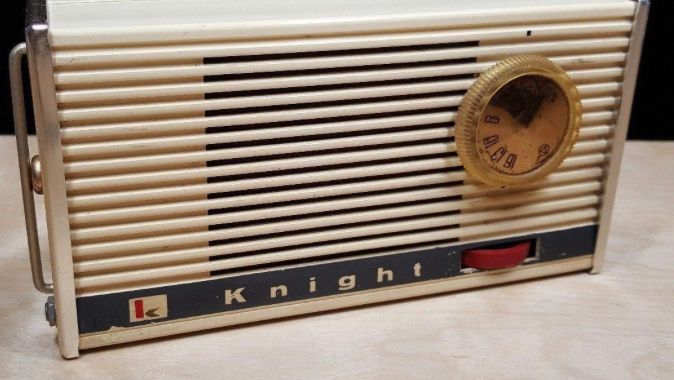
Knight-kit transistor AM radio kit

Battery eliminator for VTVM


Auxillary power supply; Light blue: flat caster wheel; Blue: Kick switch

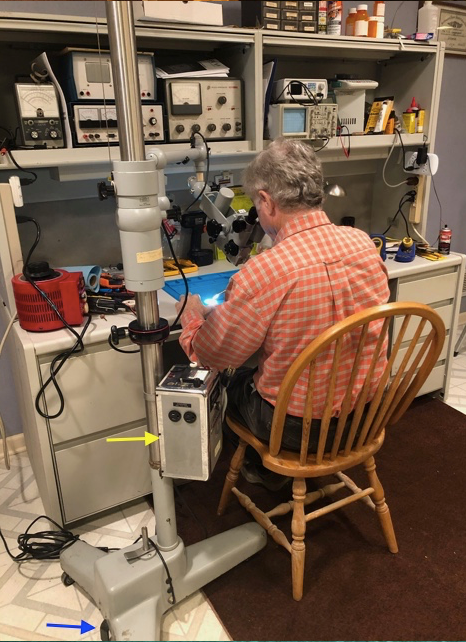
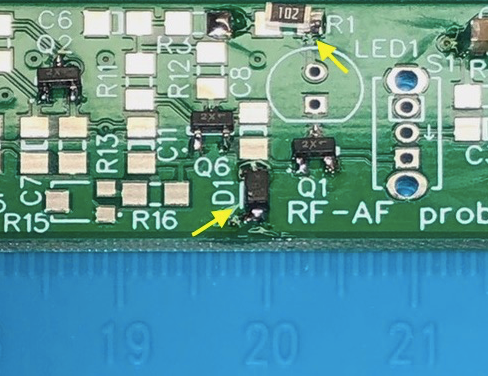
Partially assembled superprobe board with reversed D1 diode
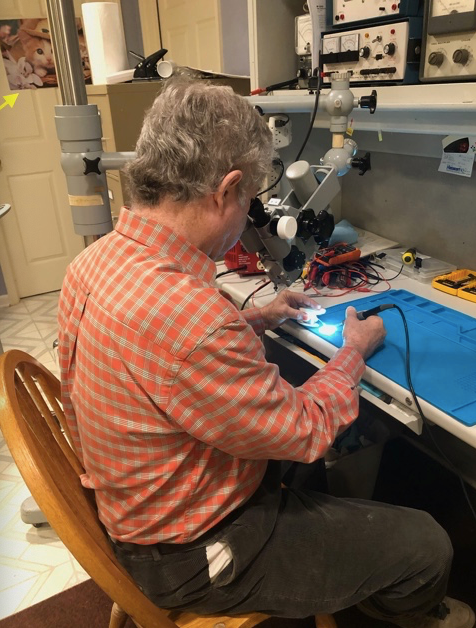
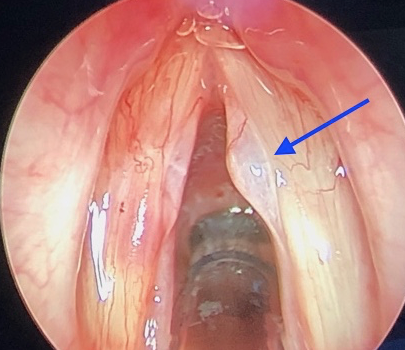
Right Vocal Cord polyp viewed with operating microscope, 2 mm x 4 mm

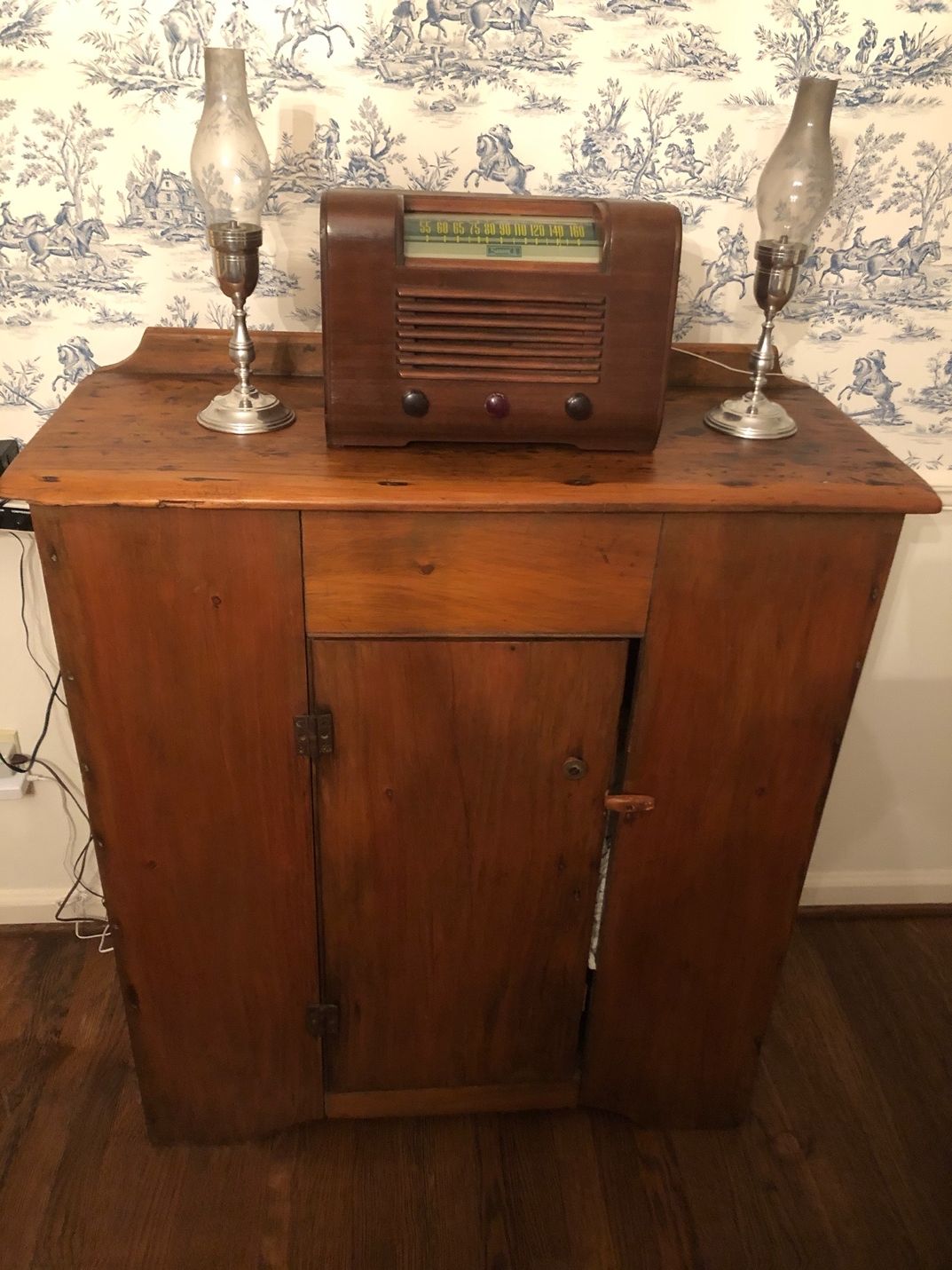
Sonora Radio auction radio
Quote of the Month
As long as I'm learning something, I figure I'm OK - it's a decent day.
Hunter S. Thompson

Meetings suspended due to COVID.
We meet every Saturday (unless a Holiday weekend) at 9:00 a.m., at the one-story AHRS Shop at the corner of 8th Avenue North and 18th Street, (1801 8th Avenue North, Birmingham, AL 35203). Birmingham, AL 35203). Use the rear (Southeast) entrance.

Meetings suspended due to COVID.
The Shop is open on Tuesdays at 9:00 a.m. until around 11:30 a.m. when we go to Marilyn's Deli and Dog for lunch next door. Note that parking can be a problem on Tuesdays, so you may have to find street parking occasionally.

Meetings suspended due to COVID.
We meet on the fourth Monday night of each month, too, at 7:00 p.m. Please come join us!
One more great benefit from becoming a member of AHRS--free Electronic classes! These electronics classes are taught the first Saturday of each month (except when something special is taking place, then we agree on another Saturday). In person classes are currently suspended due to Covid, However, these classes are being taught virtually on Zoom. Check your emails for details.
We start from the beginning Ohms Law, inductors, resistor and Capacitors color codes, as well as what each component does within the radio circuits. We also teach how to use test equipment used in the repairing of radios. We teach troubleshooting radio troubles, as well as how to read a radio diagram. There are coil winding classes, and one-on-one repair help. Come join these classes!

Membership dues are $25 a year, payable beginning in January. If you have questions about your dues, you can contact Treasurer Mike Woodruff at 205-823-7204. Dues can be mailed to AHRS at P.O. Box 131418, Birmingham AL 35213.

Be sure and check out our website at https/www.alabamahistoricalradiosociety.org, which has copies of all newsletters from 2006 to the present (click on News), videos, photo galleries, museum, Old Time Radio columns, Projects, Reading Rooms, Archives, and Contact Information

President – Dave Johnson
(205) 999—7178
johnelecco@charter.net
Vice President – Steven Westbrook
205-305-0679
spwestbro@bellsouth.net
Recording Secretary – Dr. Richard “Wag” Waguespack
205-967-4210
drminis@aol .com
Treasurer – Mike Woodruff
205-823-7204
woodruff_michael@hotmail.com
Boyd Bailey, member and Instructor 334 412-6996
Boyd.bailey@charter.net
Website – David Lake
dave2008@gmail.com
Web Address:
http://alhrs.org
E-mail Address:
ahrs2000@gmail.com
Newsletter – Jim Rogers